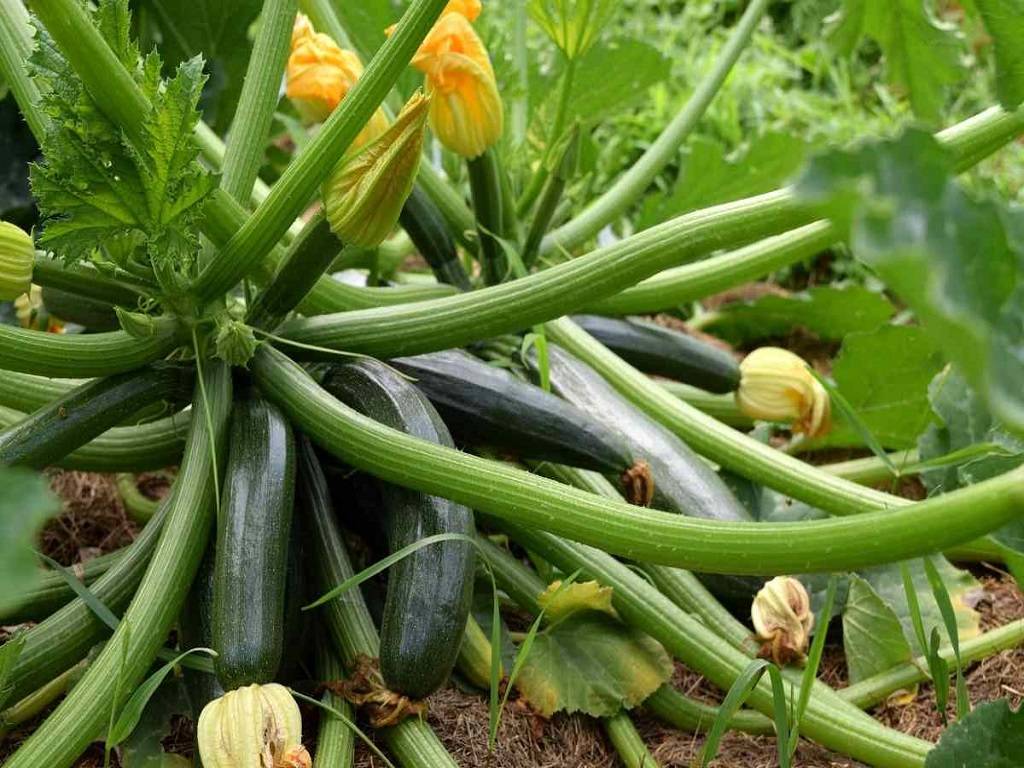
Zucchini can be consumed both raw and cooked. It is used frequently in savory meals and is classified as a vegetable. Another name for it is summer squash.
The vegetable comes in three colors: yellow, green, and light green. The zucchini vegetable has a cucumber-like form, and the best time to consume it is when it is young and between 6 and 8 inches long before the seeds appear. Technically speaking, zucchini is a type of summer squash. It is harvested while it's still young.
Vitamins, minerals, and plant-based substances are abundant in zucchini. From better digestion to a reduced risk of heart disease, it has numerous health advantages. It could make your heart healthier. The fruit is very fiber-rich. Additionally, it lowers the risk of developing diabetes. Diabetes can be effectively treated with zucchini. Some individuals like raw zucchini, which is excellent in salads. The flavor of zucchini is mild, somewhat bitter, and a little bit sweet.
In modest proportions, zucchini also contains small amounts of vitamins A, B6, and C, manganese, and potassium, and small trace levels of magnesium and phosphorus are other minerals to be found in this fruit.
Here’s How to Grow Zucchini
When to Plant Zucchini
Warm weather is ideal for planting zucchini. Wait until the soil is at least 65 to 70 degrees before planting seeds or transplants. Zucchini is cultivated as a summer crop in more temperate regions (zones 6 and lower), and it is often planted in May. Zucchini can be grown twice, once in the spring and once in the fall, in warmer growing regions (such as the Southeast, Gulf Coast, and Desert Southwest).
Zucchini Planting Locations
Full sun (at least 6 to 8 hours) and constantly moist, organic-rich soil are required for growing zucchini. Some forms of zucchini are vining varieties, which need a trellis or a lot of space to spread out. There are also shrub varieties appropriate for container planting and growing in tiny spaces.
Climate Conditions for Growing Zucchini
Summer crops that receive a lot of direct sunlight include zucchini. The optimal range is 18 to 24 degrees Celsius.
Zucchini prefer warm climates. It needs frost-free weather for at least 50 days in order to yield mature fruits.
When the growth location receives direct sunlight for at least 6 hours, zucchini plants are healthy. Zucchini seeds need a temperature of 28 to 32 °C to germinate, whereas 22 to 29 °C is ideal for zucchini nursery plants.
Soil Requirements for Growing Zucchini
Growing zucchini is best done in loamy to well-drained soil. Use only organic fertilizers on plants and, most importantly, test your soil every few years to ensure that it is healthy and balanced. Soils with a high organic matter content and a pH of 6.5 are best for growing zucchini plants.
In loose soil, the seedling will seem autonomous. Because zucchini plants consume a lot of food, the soil needs to be rich in organic matter. Lighter soils are suitable for early seed sowing, whereas heavier soils are best for plants that will produce late in the season.
Zucchini Harvest
Plant spacing and seedling rate:
For growing zucchini, the seed rate is 1–1.25 kg/acre; for growing summer squash, it is 2 kg/acre.
Sowing Period:
The seed is planted when the night temperature drops to between 18 and 20 degrees Celsius in the final week of February or the first week of March. From December to February, the nursery can be raised in plug trays with 3.5 cm cells in a covered structure.
Plant Distance
Plants for zucchini are spaced roughly 1 meter apart, with 500 to 900 mm separating each plant in a row. Per hectare, this results in 7500–11,000 plants.
Fertilizer Control
These are the two most important functions of fertilizers and manure. They provide the soil with the right nutrients, which can help in the growth of strong plants.
Before planting, mix the soil with compost or well-rotted manure if you want your zucchini to grow naturally. Additionally, you can use organic fertilizers. These plants consume a lot of food. Therefore, they require enough nutrition to sustain that growth. When preparing the field, apply 1.5 to 2 quintals FYM. The recommended NPK dose is generally 25 kg per acre.
Irrigation Control
Regular moisture is necessary for zucchini to produce abundant, trouble-free harvests. For plants to survive, they need water. When the soil feels dry, water zucchini plants by 1 to 2 inches. In general, provide water once per week when the weather is chilly and up to twice or thrice each week when it's hot and dry.
Intercultural Operations
Regular weeding is required for zucchini: The initial weeding operation can be carried out anywhere between 15 and 20 days after sowing in order to keep the weeds under control and provide an economically feasible yield from this crop.
Zucchini Harvesting Timing:
Since zucchini is an annual plant, its lifespan will only be one growing season, which can range from 90 to 150 days, depending on the variety, the growing environment, and the location.
Most zucchini types are available for initial picking 40 to 50 days after seeding. After flowering, it grows swiftly, allowing you to pick it before the zucchini becomes hard.
Since zucchini is a type of summer squash, its fruit has tender, eatable skin. Summer squash grows quickly and can be picked after 35 days. It is one of the first cucurbits to reach the market, and only places close to markets are used for its growth.












